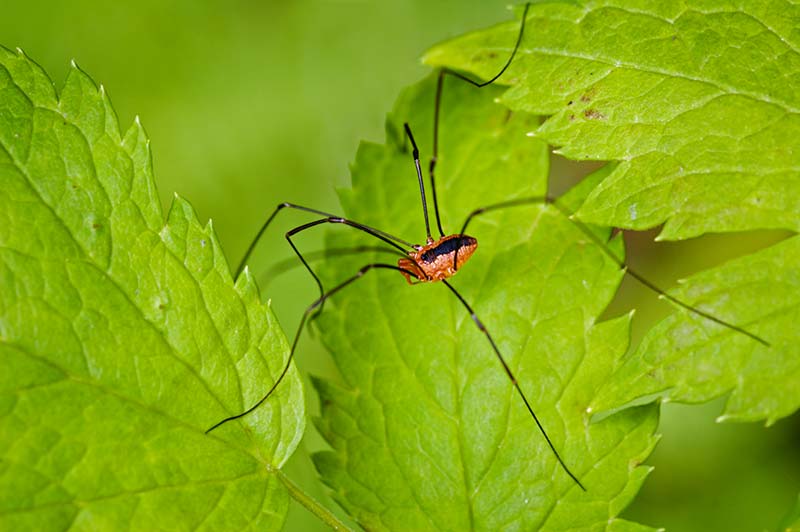The Truth About Tarantulas and Other Spiders
Coming across a tarantula unexpectedly can send shivers up your spine. Tarantulas are huge, hairy, and, like many spiders, are often misunderstood. With more than 35,000 spider species worldwide,1 many myths surround these creatures. Some beliefs about tarantulas — and other spiders — are misconceptions, but others bear nuggets of truth.
TRUE OR FALSE?
Tarantulas are aggressive and deadly to humans.
False: With more than 800 species across the world,3 tarantulas vary in aggression, but they're normally slow-moving, docile creatures. A tarantula's bite will hurt, but its venom is milder than a typical bee sting.2 Even so, appearances can be frightening. One South American tarantula known as the Goliath bird-eater has 1-inch-long fangs and an 11-inch leg span. In addition to birds, the Goliath eats bats and other prey.1
Tarantulas defend themselves by ejecting hairs from their abdomens.
True: Threatened tarantulas usually run to their burrows to hide. But if cornered, they show their fangs and stand on hind legs. Tarantulas native to the Americas have an additional, porcupine-like defense in barbed hairs on their abdomens. Some species press the barbs into enemies when close enough; others eject them like spears to drive them deeper into their enemies. Tarantulas in other parts of the world don't have these irritating, defensive hairs.3

Some tarantula species are quite colorful.
Female widow spiders always eat the males after mating.
False: Black widow females are famous for lunching on their smaller mates, but not all males get eaten; some are quick enough to escape. In several species, females rarely eat their mates, especially in the wild.8 But the male of the red widow spider actually puts himself into the female's mouth. If she refuses to eat him, he keeps trying until she accepts.4 Widow spiders rarely bite humans, but their venom causes intense pain.5

Only one black widow species regularly eats its mates.
People frequently swallow spiders that crawl into their open mouths when asleep.
False: Fortunately, entomologists say this is a rare occurrence – if it ever happens at all.6,7 Spiders perceive vibrations as signs of imminent danger. So they would likely avoid a sleeping human because of normal breath and heart beat vibrations that occur when dozing. Also, the sensation of a crawling spider would wake most humans.7,8 In some parts of the world, humans do eat spiders, but they're considered delicacies.
Daddy long-legs are deadly spiders that lack fangs long enough to inject their venom.
False: Several different creatures go by the common name of daddy long-legs. They can bite humans, but their mild venom isn't deadly.6 One species doesn't even have venom. The common daddy long-legs, also known as the harvestman, isn't even a spider. All true spiders have a two-section body, but the harvestman's body is a single section.8

Some daddy long-legs spiders aren't really spiders at all.
Finding spiders or spider-like creatures in your home can cause distress, but separating fact from fiction can help you stay calm. If you need help ridding your domain of these unwelcome visitors, Amdro Quick Kill Ant & Spider Killer stands ready to lend a hand.
Amdro is a registered trademark of Central Garden & Pet Company.
Sources:
1. Kelly, Cynthia D., Fellers, Thomas J. and Davidson, Michael W., “Spiders," Florida State University. November 2015.
2. Weisman, Dale, “Tarantula!," Texas Parks & Wildlife, March 2010.
3. Gallon, Richard C., “The Natural History of Tarantula Spiders," The British Tarantula Society.
4. Miller, Michael and Jemison, Micaela, “Eight Strange But True Spider Facts," Smithsonian Science News, November 2014.
5. Edwards, G.B., “Pest Alert: Venomous Spiders in Florida," Florida Department of Agriculture and Consumer Services.
6. Garvey, Kathy Keatley, “Eighteen Myths About Insects and Spiders," University of California, November 2014.
7. Sneed, Annie, “Fact or Fiction?: People Swallow 8 Spider a Year While They Sleep," Scientific American, April 2014.
8. Crawford, Rod, “Spider Myths," Burke Museum.




